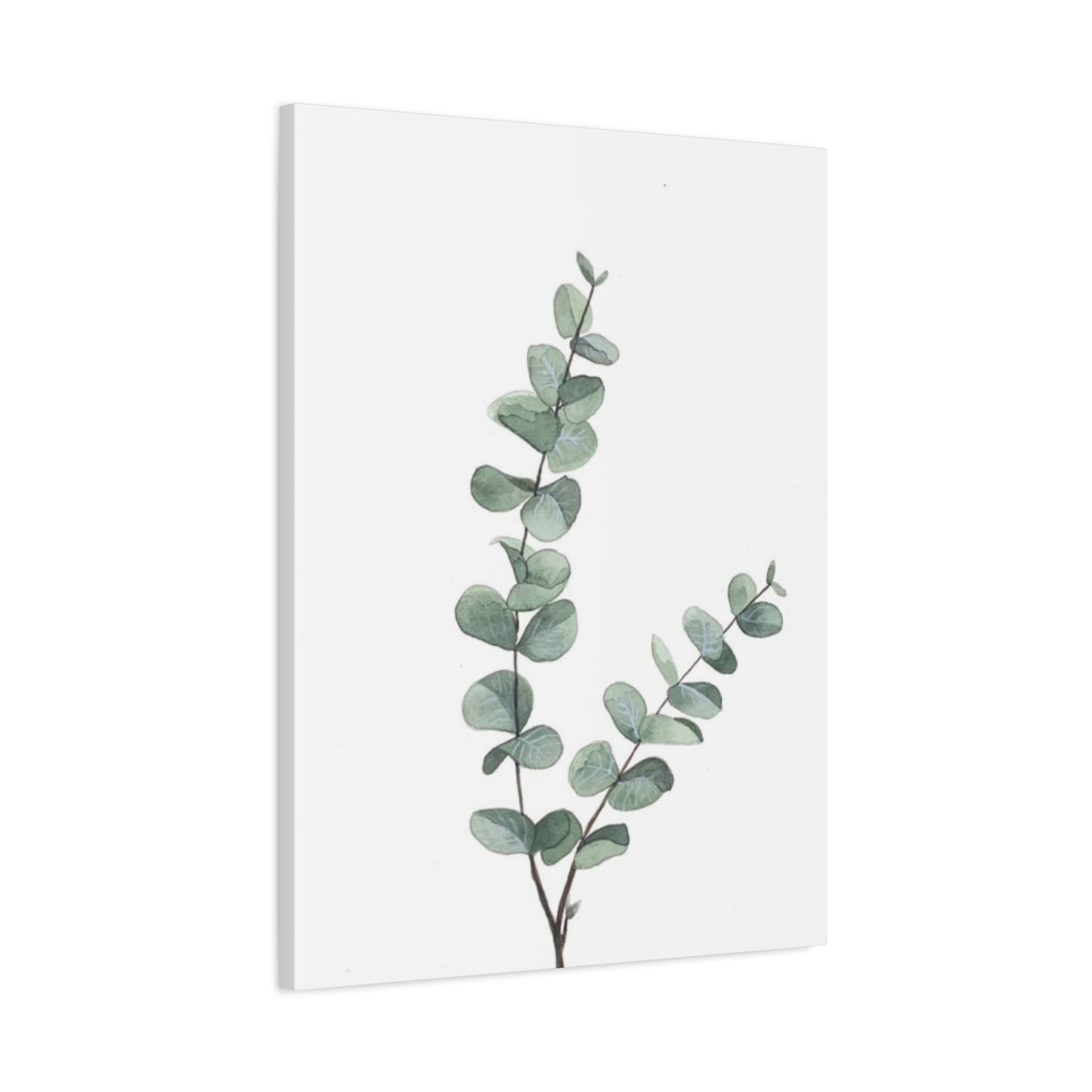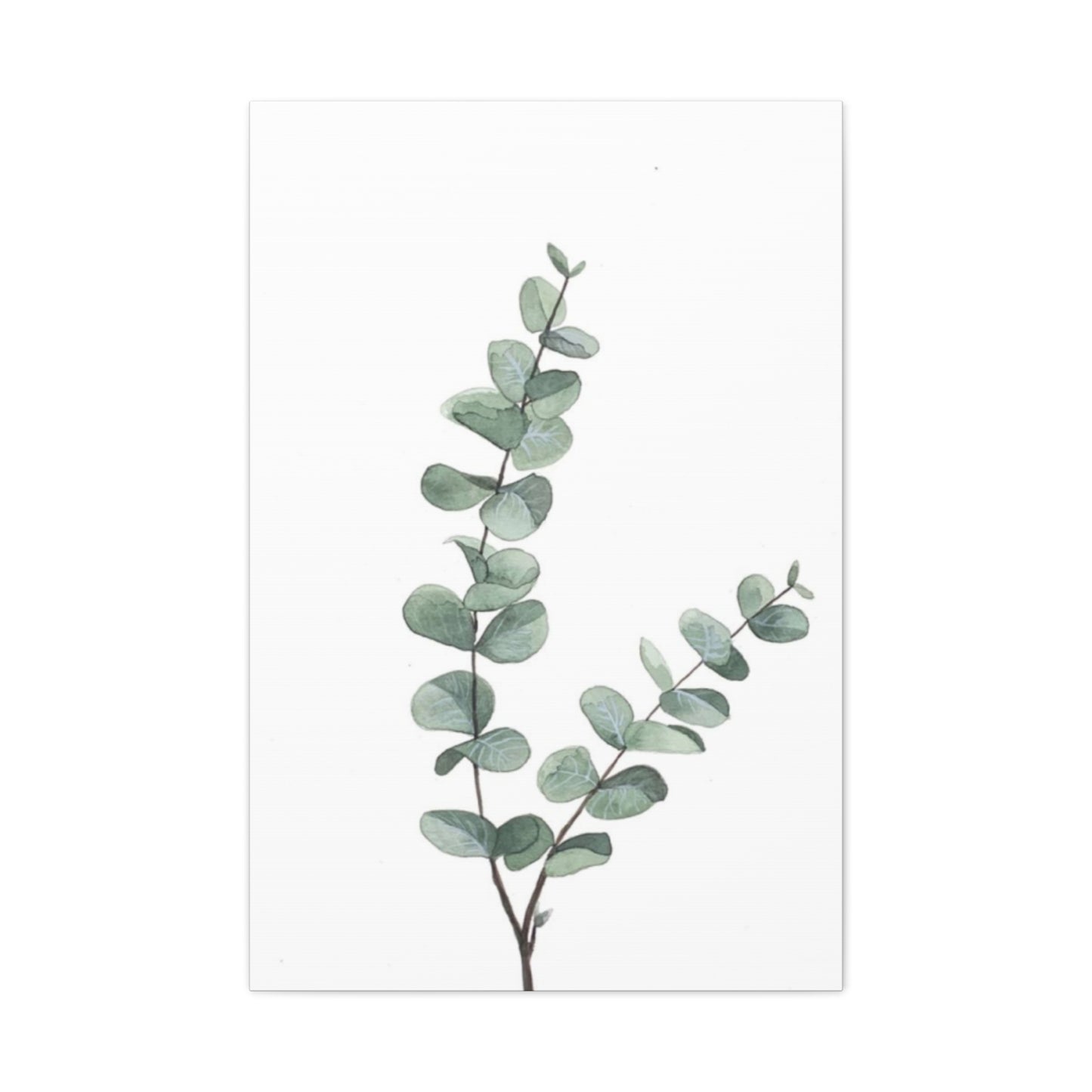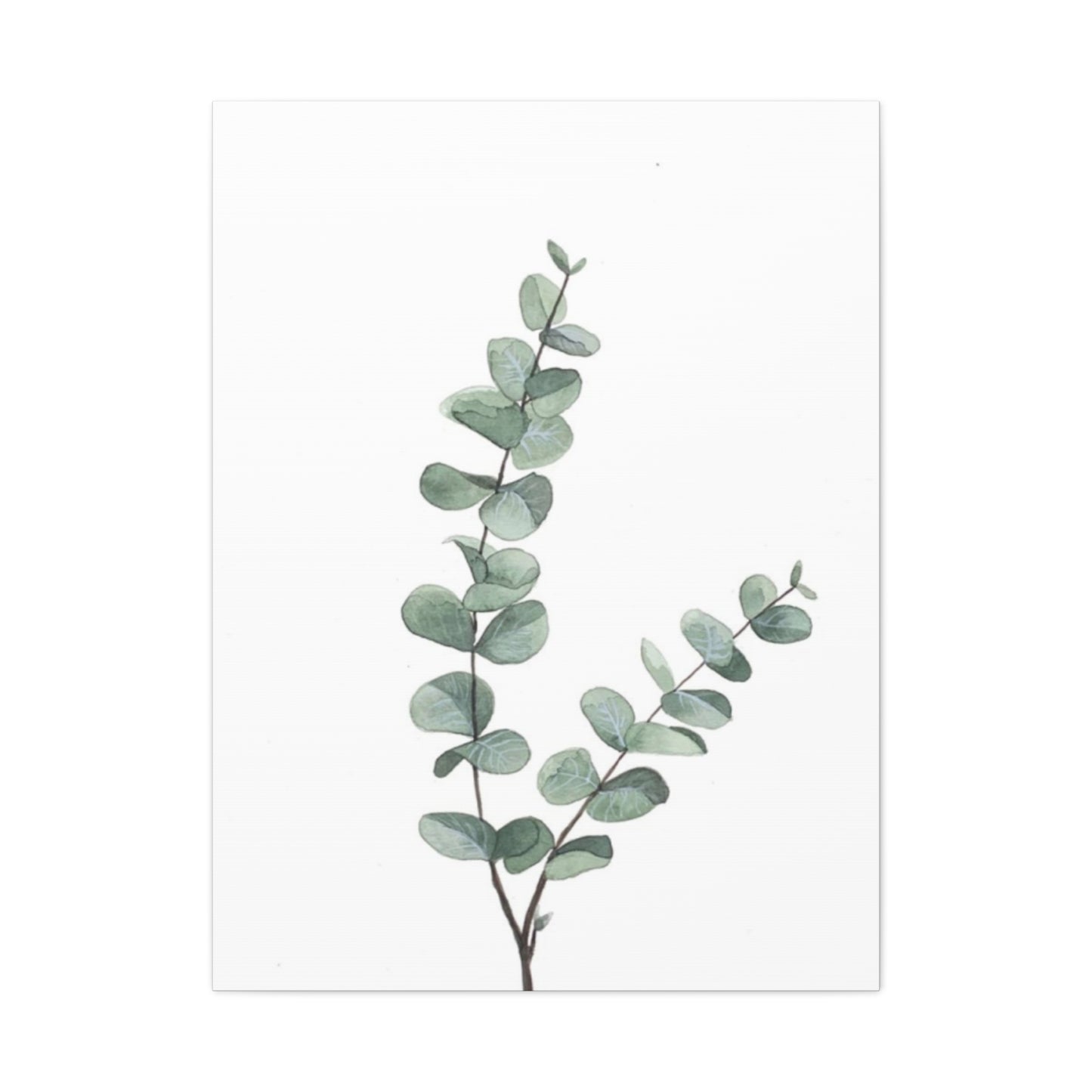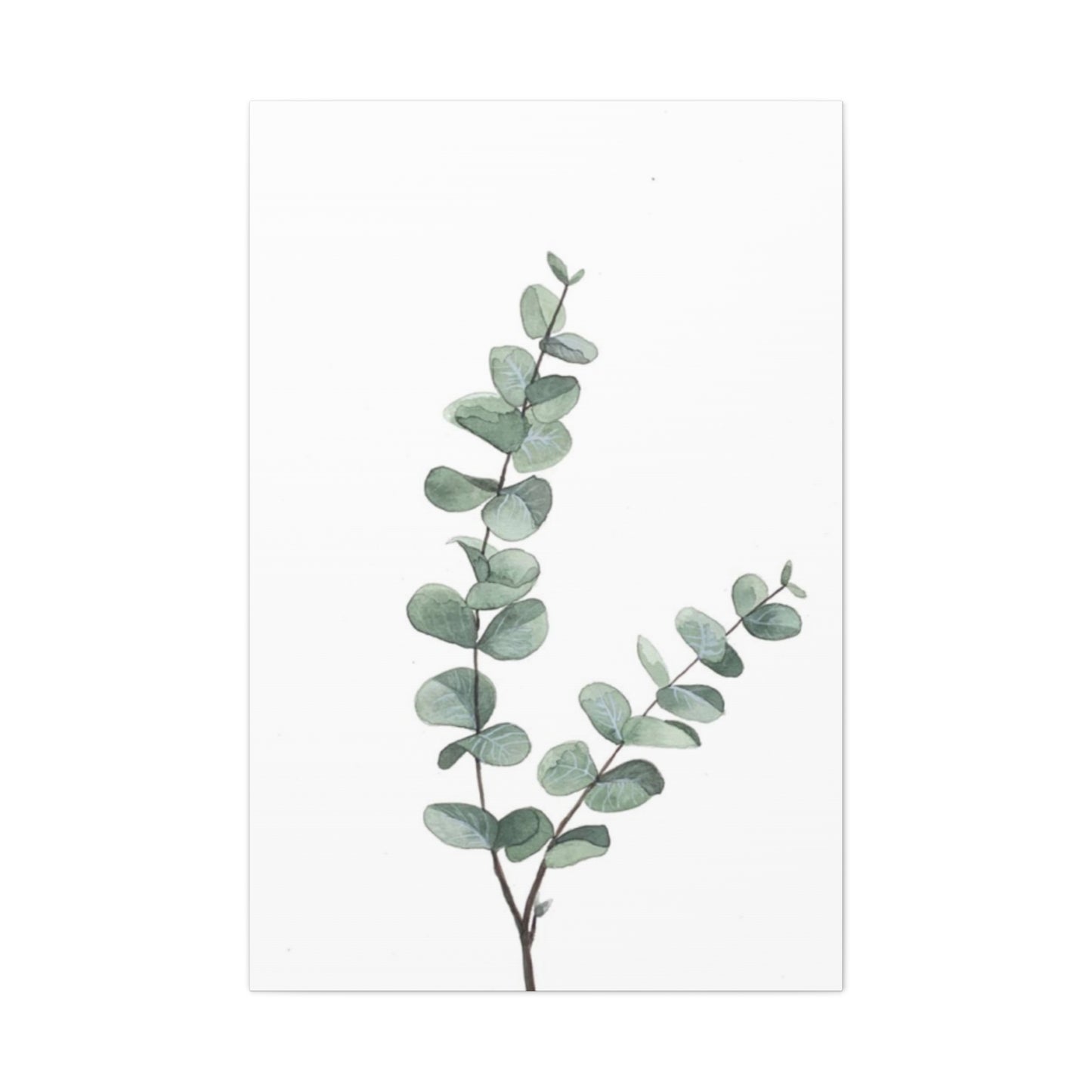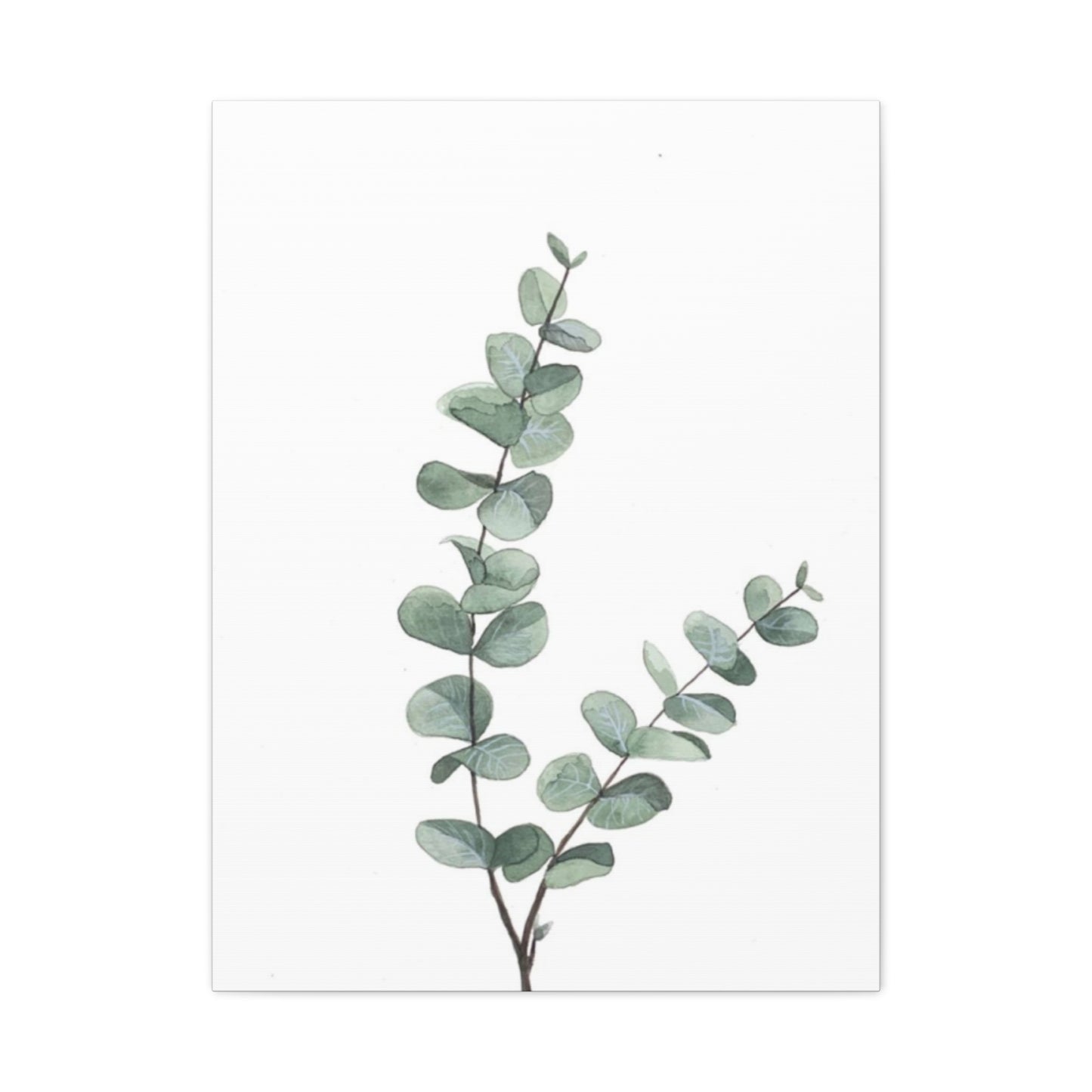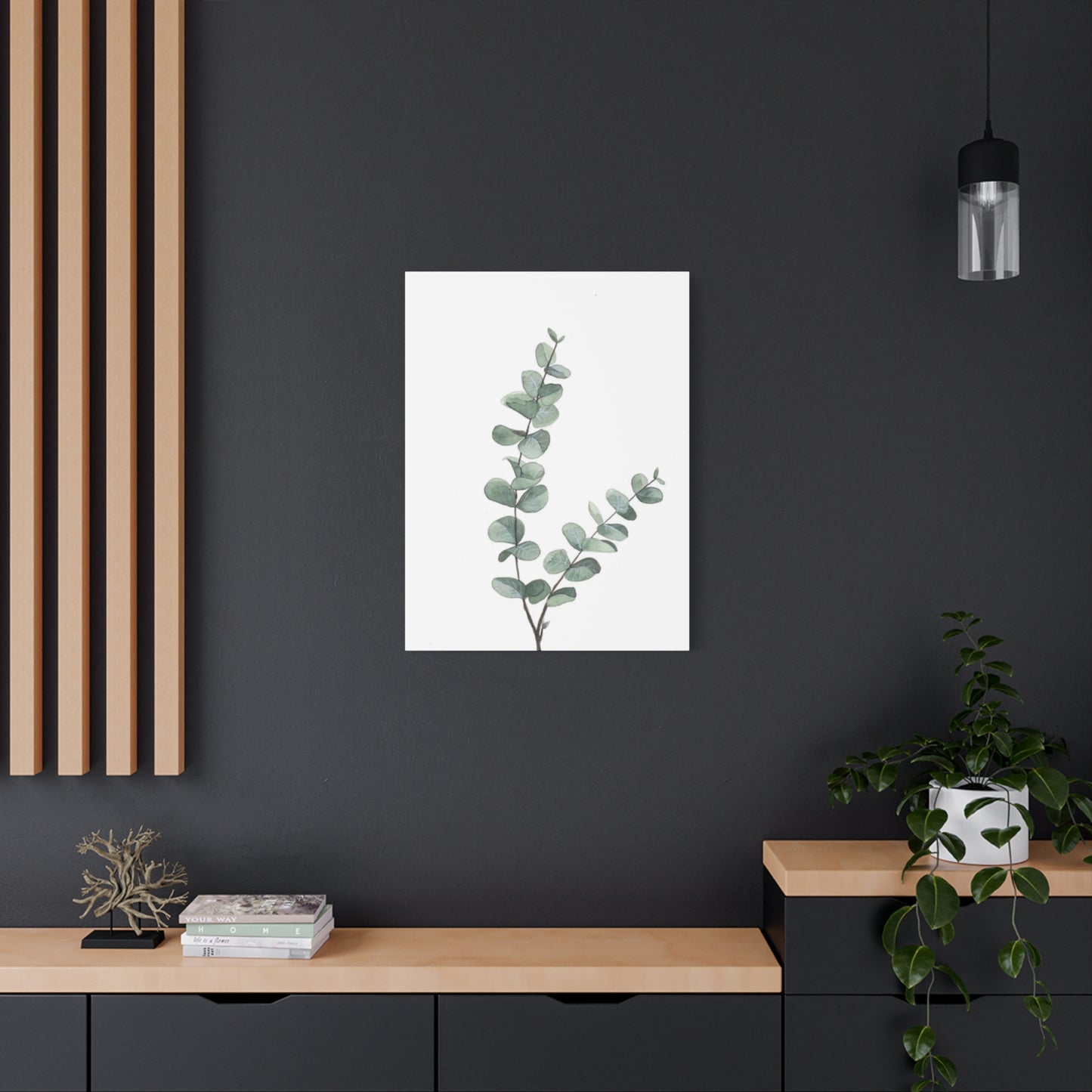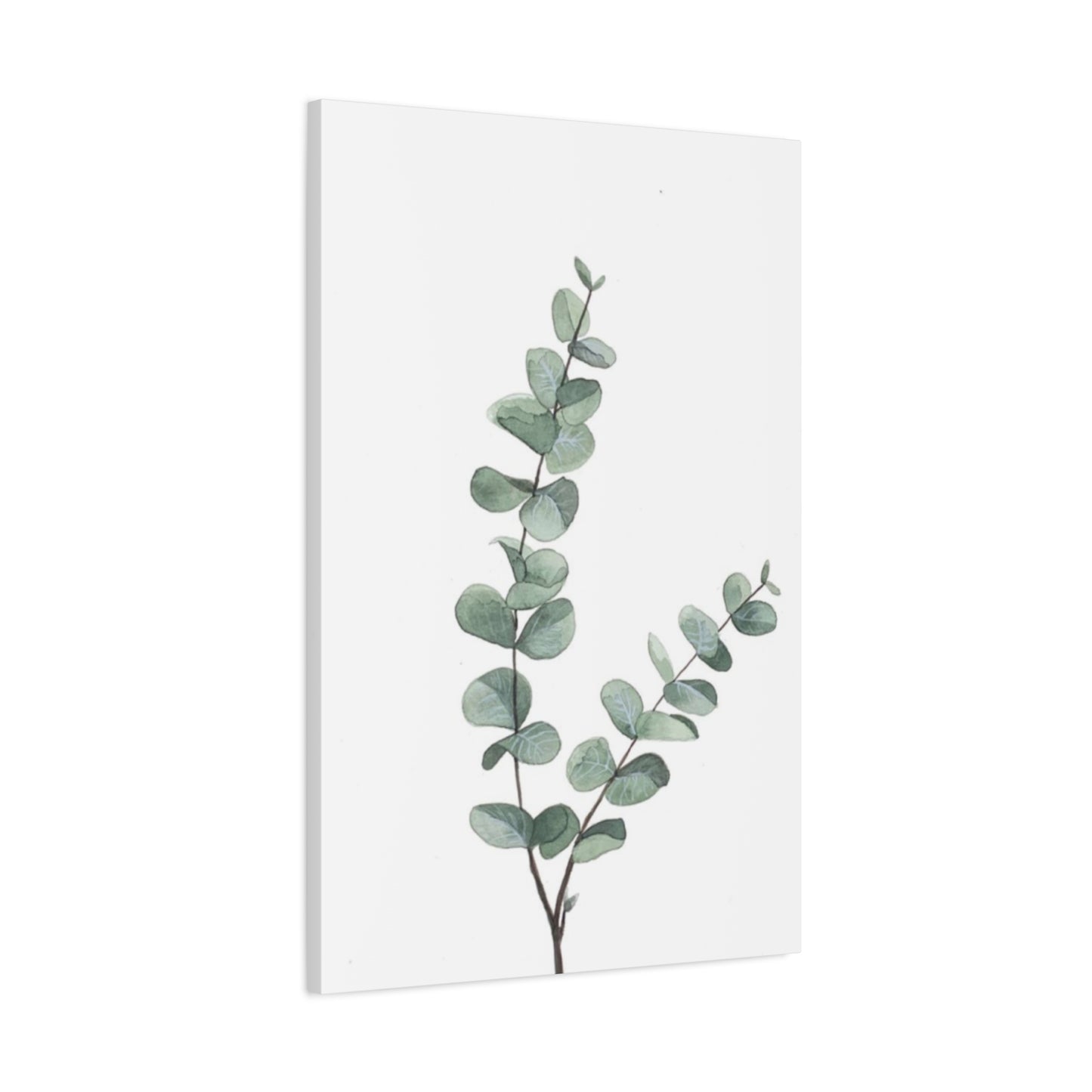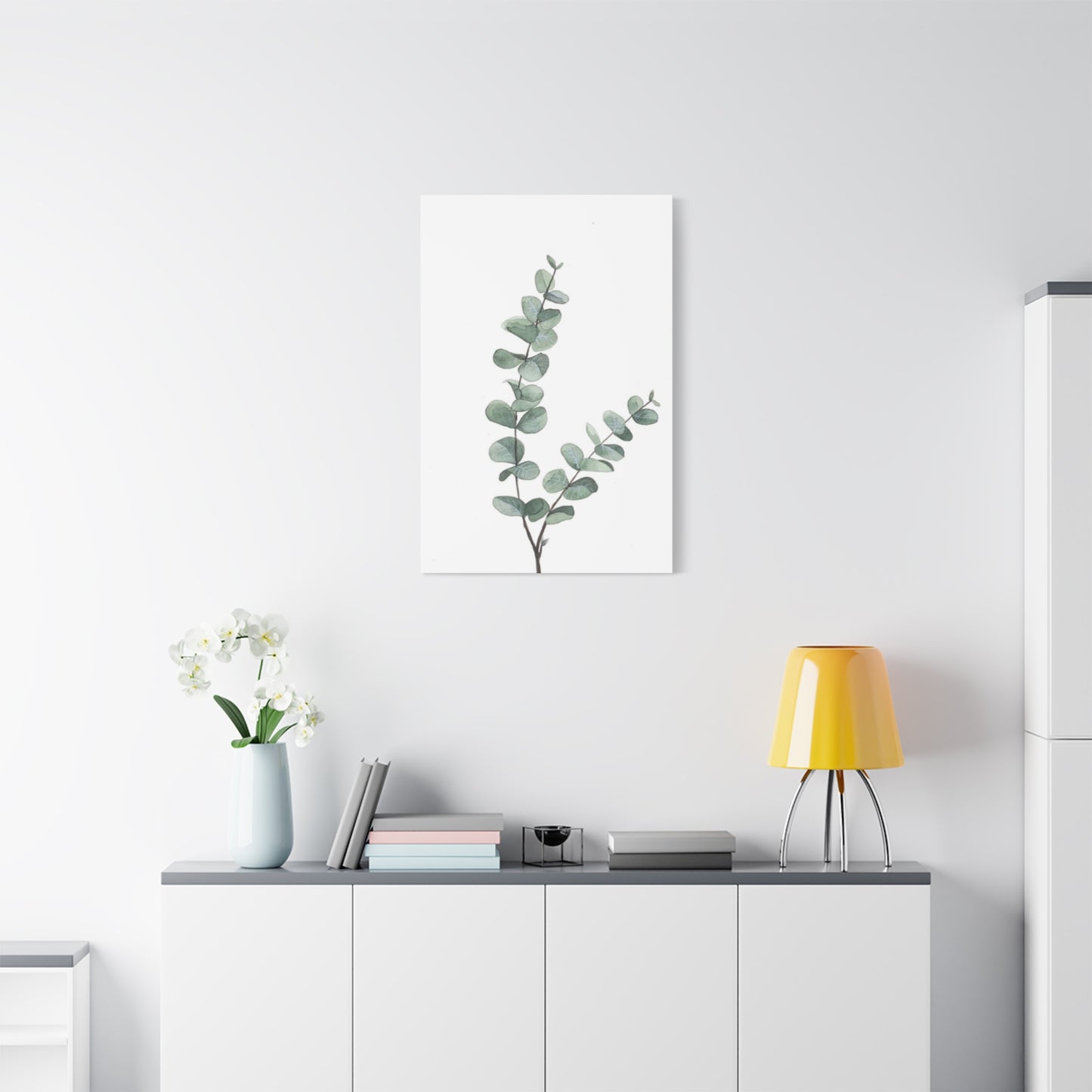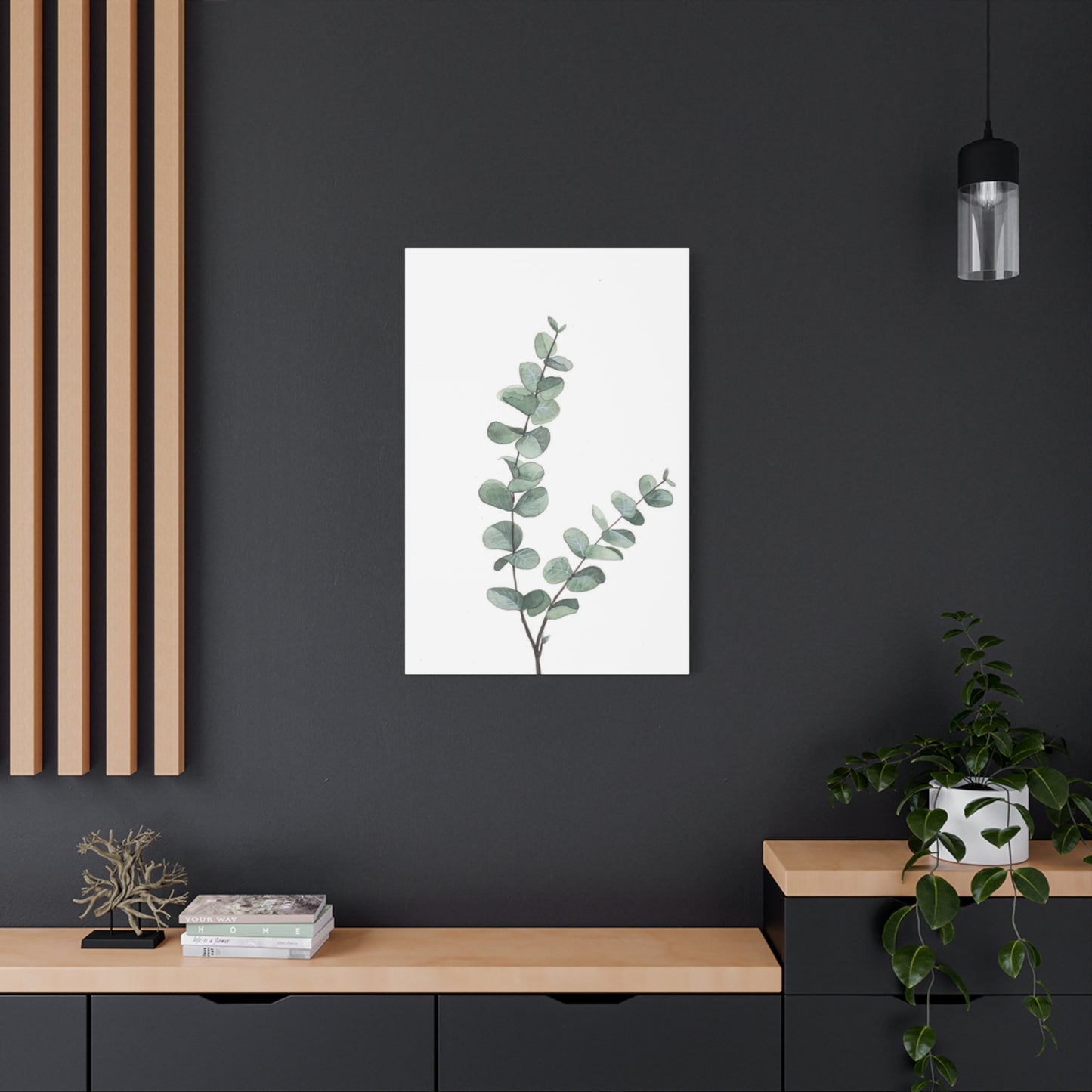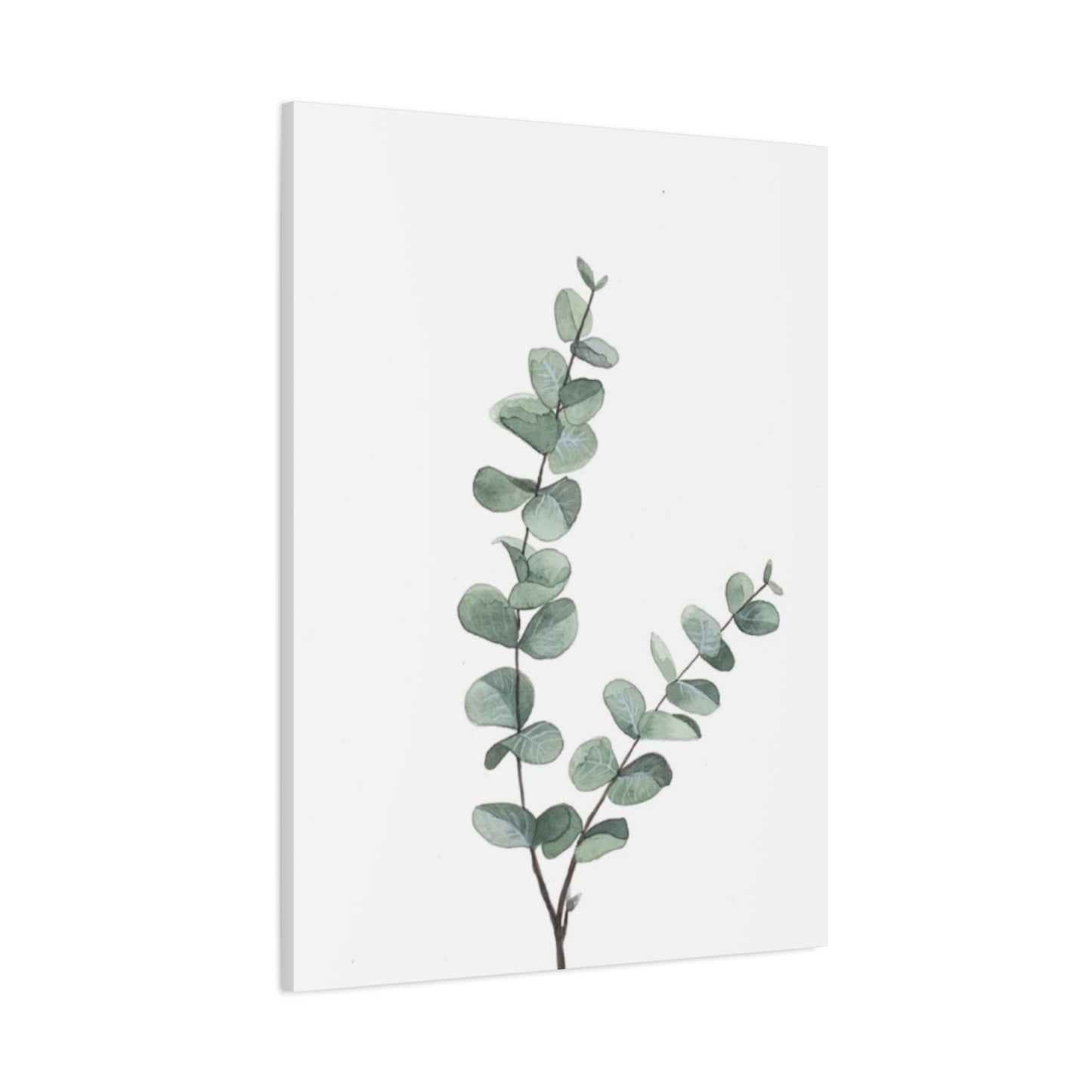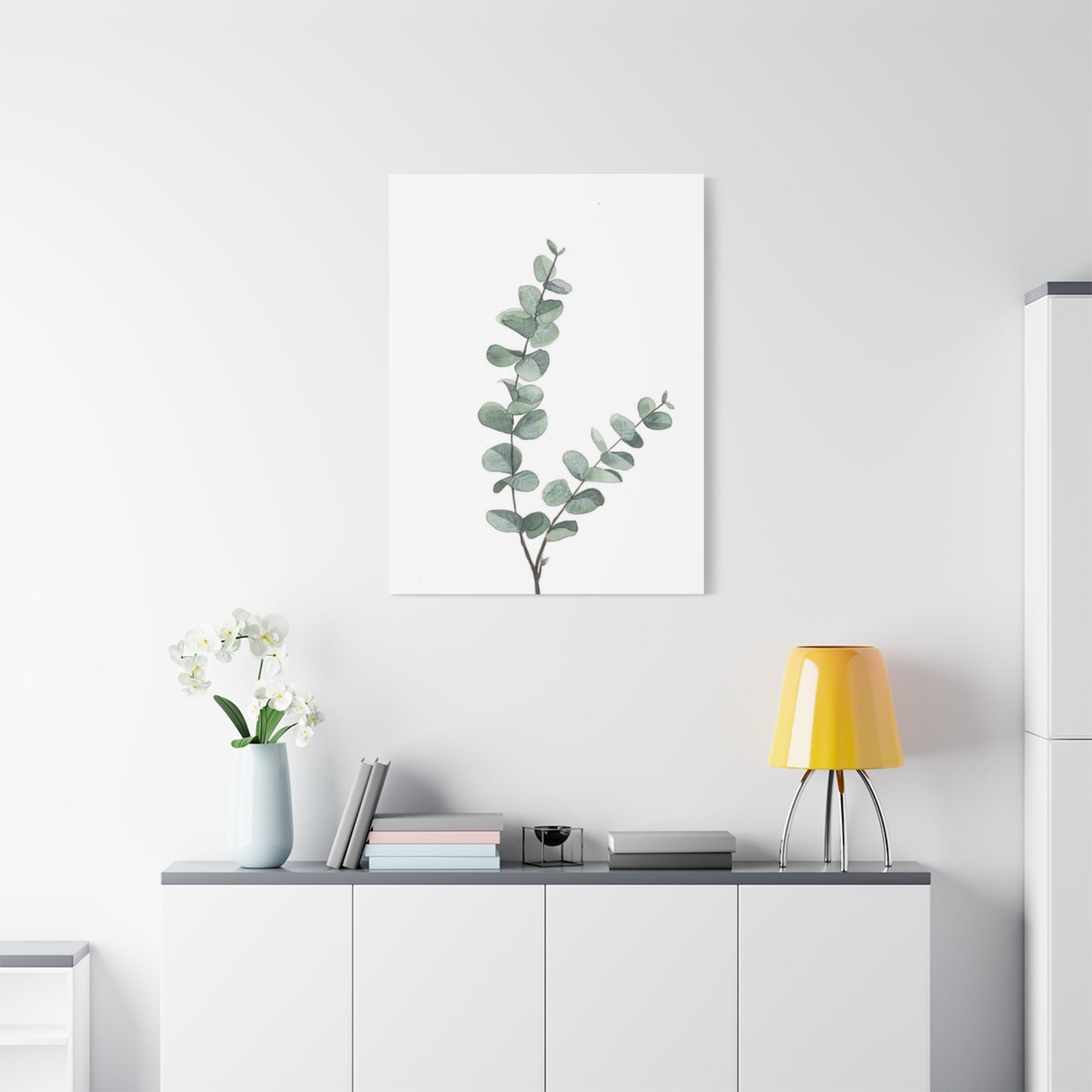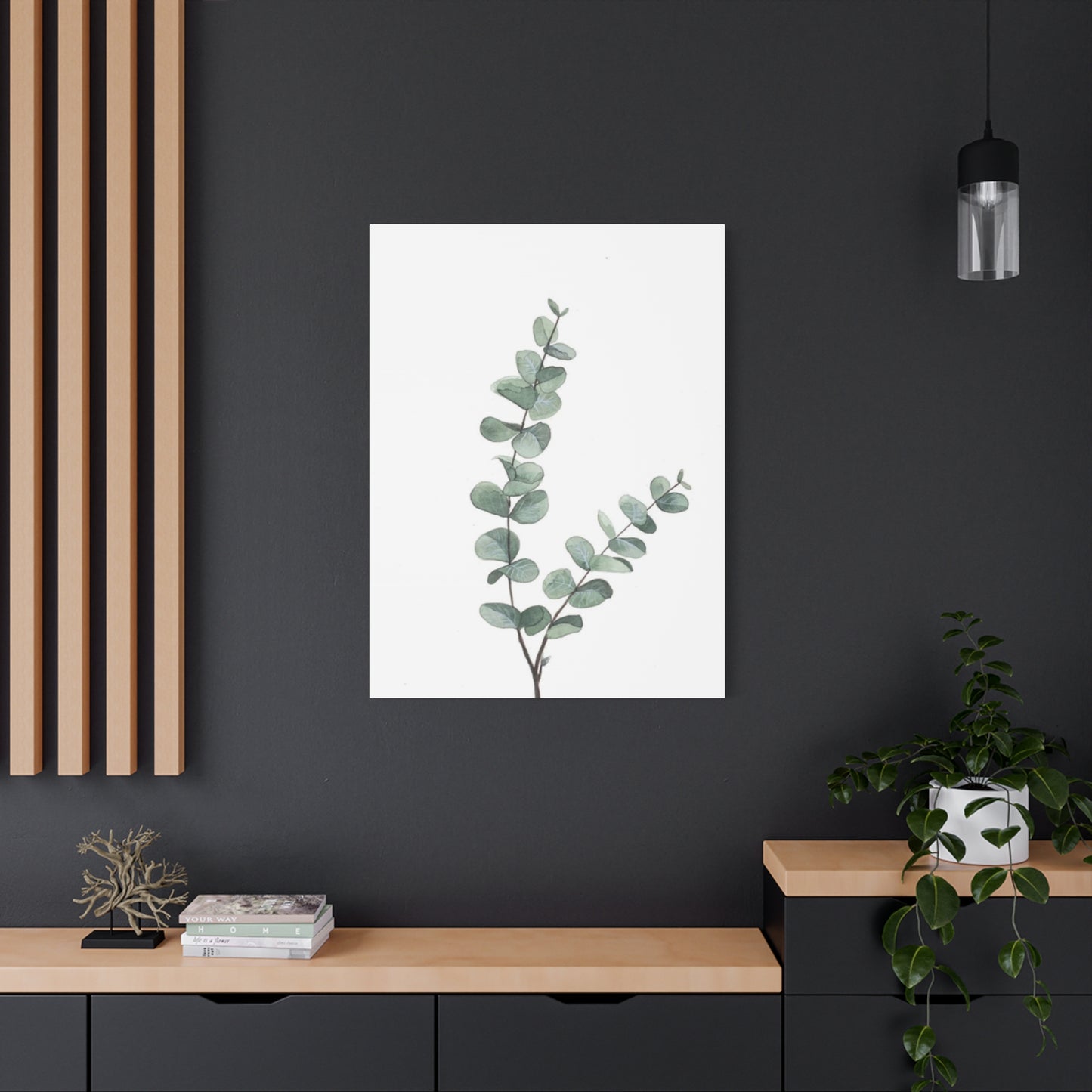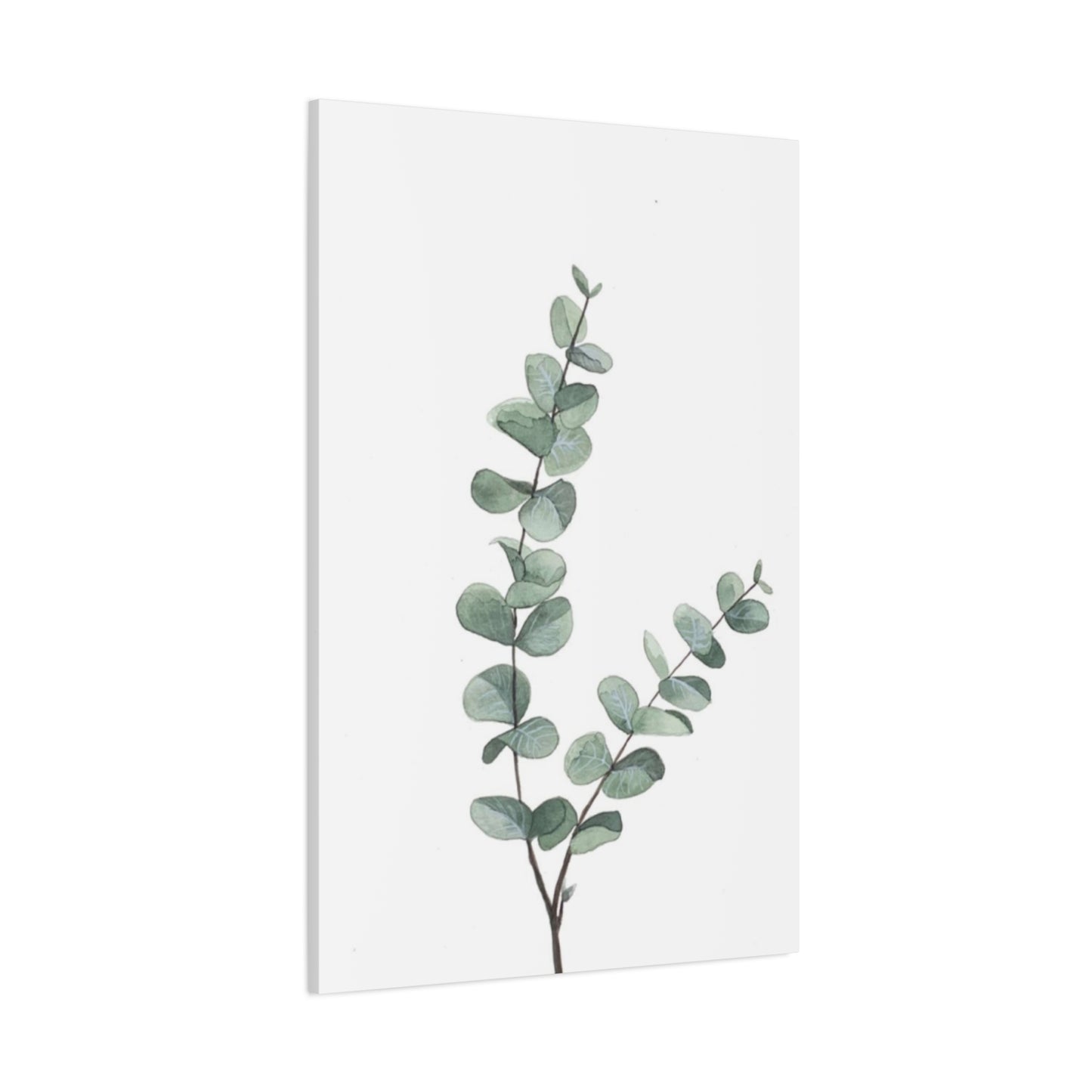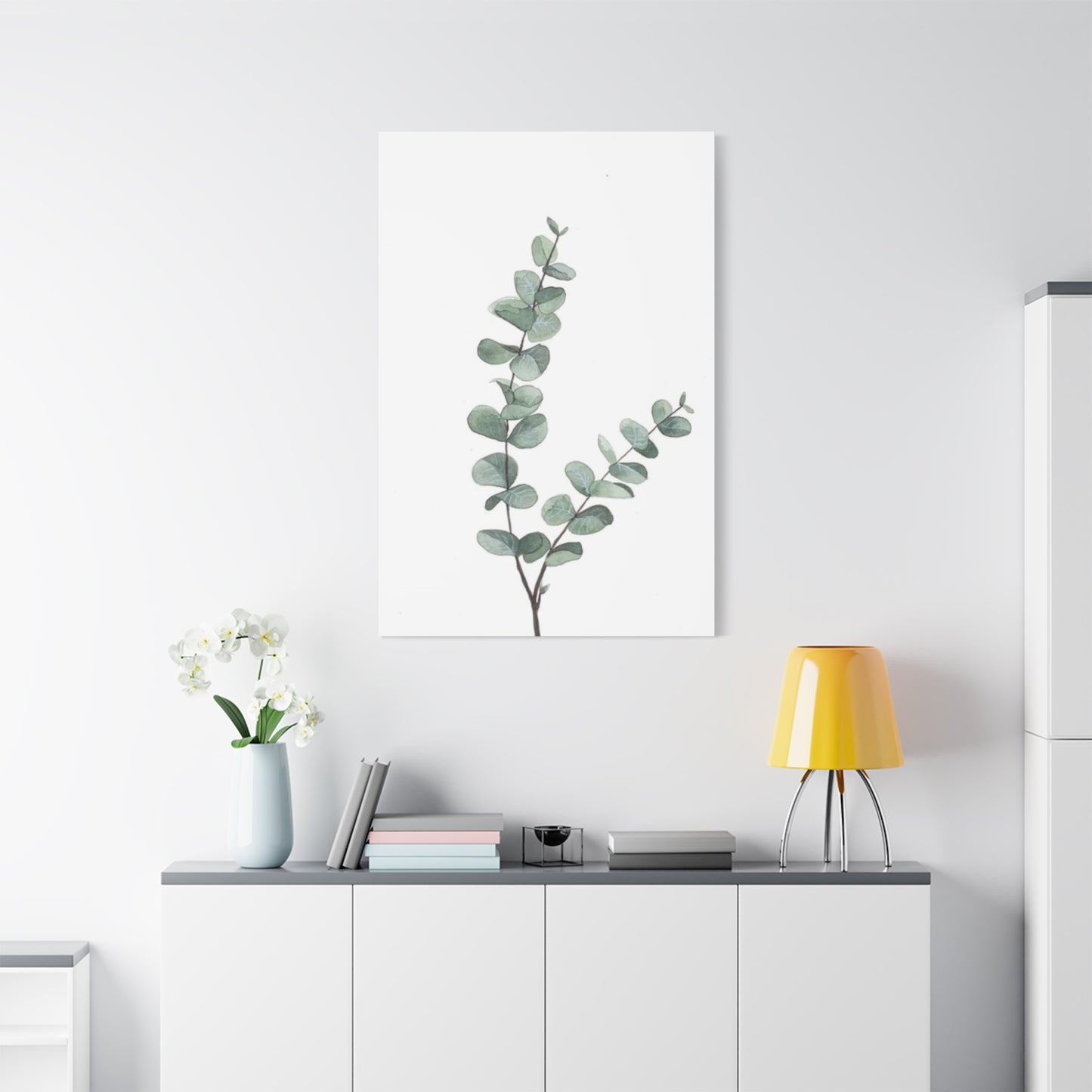Versatile and Elegant: Eucalyptus Stem Wall Art to Enhance Any Room
Interior design enthusiasts constantly search for ways to bring serenity and natural beauty into their living spaces. Among the countless decorative options available, botanical artwork featuring eucalyptus stems has emerged as a beloved choice for homeowners seeking to create peaceful, sophisticated environments. These prints combine organic elegance with contemporary aesthetics, making them suitable for various design schemes ranging from modern farmhouse to Scandinavian minimalism.
The appeal of eucalyptus artwork lies in its versatility and timeless quality. Unlike trend-driven pieces that quickly feel dated, botanical prints maintain their relevance across changing design movements. The soft silvery-green tones of eucalyptus leaves complement virtually any color palette, while the organic forms add visual interest without overwhelming a space. Whether displayed as a single statement piece or arranged in pairs, these artworks bring a sense of tranquility that resonates with people seeking refuge from the demands of daily life.
Canvas prints featuring eucalyptus stems offer an accessible way to incorporate natural elements into interior spaces without the maintenance requirements of live plants. They provide the visual benefits of greenery while remaining fresh and vibrant indefinitely. For those who lack gardening skills or struggle with plant care, these prints deliver nature's aesthetic rewards without the responsibility. Additionally, they work beautifully in spaces where live plants might not thrive due to lighting limitations or environmental conditions.
The growing popularity of eucalyptus-themed décor reflects broader cultural shifts toward wellness-focused living and biophilic design principles. Research continues to demonstrate that incorporating natural elements into interior environments can reduce stress levels, improve concentration, and enhance overall wellbeing. Botanical artwork serves as a bridge between outdoor and indoor worlds, creating visual connections to nature that nourish the human spirit even within urban settings.
Minimalist Charm: Two Eucalyptus Stem Prints
The concept of minimalism has revolutionized contemporary interior design by emphasizing simplicity, functionality, and intentional choices. Within this framework, artwork featuring two eucalyptus stems represents the perfect embodiment of minimalist principles. These prints distill botanical beauty to its essential elements, removing unnecessary complexity while preserving the organic grace that makes eucalyptus so visually appealing.
Minimalist artwork requires careful consideration of composition, negative space, and visual balance. Prints depicting two eucalyptus stems achieve these goals through thoughtful arrangements that highlight the natural architecture of the plant. The stems typically appear against neutral backgrounds that allow the foliage to command attention without competing visual elements. This approach creates a sense of calm and order that aligns with minimalist philosophy, where every element serves a deliberate purpose.
The number two holds particular significance in design theory, offering balance without symmetry and interest without complexity. A single stem might feel too sparse for certain spaces, while three or more could begin to feel busy. Two stems strike an ideal middle ground, providing enough visual content to engage viewers while maintaining the restraint that defines minimalist aesthetics. This quantity allows for subtle variations in the positioning and curvature of each stem, creating dynamic compositions that avoid monotony.
Color selection plays a crucial role in minimalist eucalyptus prints. The natural hues of eucalyptus leaves range from sage green to dusty blue-green, often with silvery undertones that catch and reflect light beautifully. Against backgrounds of white, cream, or soft gray, these colors create gentle contrast that feels soothing rather than jarring. The muted palette ensures the artwork integrates seamlessly into minimalist spaces where color discipline maintains visual harmony.
Texture considerations further enhance the minimalist appeal of eucalyptus prints. High-quality canvas materials add dimensional interest without introducing pattern or ornamentation. The slight grain of canvas provides tactile variety that prevents walls from feeling flat or sterile, a common challenge in minimalist interiors. When properly stretched and mounted, canvas prints offer a polished, gallery-quality appearance that elevates the perceived value of the artwork.
Frame selection for minimalist eucalyptus prints requires careful thought. Many designers prefer frameless presentations where the canvas wraps around the edges of the stretcher bars, creating a clean, contemporary look. Alternatively, simple wooden frames in natural finishes or thin metal frames in matte black or brass can complement the artwork without detracting from its simplicity. The key lies in choosing frames that support rather than compete with the botanical imagery.
Placement strategies for minimalist eucalyptus prints emphasize intentionality and breathing room. Rather than clustering artwork closely or filling every available wall space, minimalist design favors generous negative space around each piece. This approach allows the eye to rest and fully appreciate the artwork without visual fatigue. In bedroom settings, positioning prints above the headboard creates a focal point that draws the gaze upward, making the space feel more expansive.
The psychological impact of minimalist eucalyptus artwork extends beyond mere aesthetics. Studies in environmental psychology suggest that simplified visual environments reduce cognitive load, allowing the brain to process information more efficiently and maintain focus on important tasks. In home offices or study areas, these prints can contribute to improved concentration and productivity while adding warmth that prevents spaces from feeling cold or institutional.
Minimalist eucalyptus prints also excel in supporting meditation and mindfulness practices. The organic forms provide gentle focal points for contemplative viewing, encouraging the mind to settle and find stillness. Unlike complex, busy artworks that stimulate constant visual exploration, the simplicity of two eucalyptus stems invites deeper, more sustained observation. This quality makes them particularly valuable in spaces dedicated to yoga, meditation, or quiet reflection.
Durability represents another practical advantage of canvas-based eucalyptus prints. Unlike paper prints that require protective glazing, canvas offers inherent resistance to minor impacts and handling. Modern printing technologies and protective coatings ensure these pieces maintain their color vibrancy and structural integrity for years, even in high-traffic areas. This longevity aligns with minimalist values of investing in quality items that endure rather than disposable décor that requires frequent replacement.
Freshen Your Walls with Eucalyptus Art
Refreshing living spaces often begins with reassessing wall décor and identifying opportunities for enhancement. Over time, even well-designed rooms can start to feel stale or uninspiring, particularly when artwork has remained unchanged for extended periods. Introducing eucalyptus art offers an effective solution for revitalizing interiors without undertaking major renovations or substantial financial investments.
The concept of freshening walls goes beyond simply changing artwork; it involves strategically selecting pieces that inject new energy into spaces while maintaining cohesion with existing design elements. Eucalyptus art excels in this role due to its inherent versatility and ability to complement diverse color schemes and furniture styles. Whether your home features warm earth tones or cool neutral palettes, eucalyptus prints harmonize beautifully with both approaches.
Seasonal changes often inspire the desire to refresh interior environments. As nature transitions through cycles, bringing hints of those changes indoors creates continuity between outdoor and indoor experiences. Eucalyptus artwork, with its evergreen appearance and soft coloring, provides year-round appropriateness while subtly echoing the natural world. During winter months, these prints add welcome greenery when outdoor landscapes may appear barren. In summer, they contribute cooling visual effects that complement warmer weather.
The psychological phenomenon known as habituation explains why familiar environments gradually cease to stimulate our senses. Our brains become accustomed to consistent visual information, effectively filtering it from conscious awareness. Introducing new artwork disrupts this habituation, reawakening our attention to our surroundings and renewing appreciation for our living spaces. Eucalyptus prints provide this refreshing effect while maintaining enough subtlety to avoid becoming visually demanding or tiresome over time.
Budget-conscious homeowners appreciate eucalyptus art as an economical approach to interior refreshment. Compared to furniture replacement or architectural modifications, artwork represents a relatively modest investment that delivers significant visual impact. Canvas prints, in particular, offer excellent value by combining artistic appeal with durability and ease of installation. This accessibility makes them ideal for renters or homeowners who prefer flexible design options.
The process of selecting eucalyptus artwork to freshen walls should consider existing room dynamics. Evaluate current color distributions, identifying whether spaces would benefit from reinforcing dominant hues or introducing complementary accents. Eucalyptus prints typically feature greens, silvers, and blues that can either harmonize with similar tones already present or provide gentle contrast against warmer palettes. Understanding color theory basics helps ensure new artwork enhances rather than conflicts with established design schemes.
Scale and proportion significantly influence how effectively new artwork freshens a space. Undersized pieces may appear insignificant and fail to make the desired impact, while oversized selections can overwhelm rooms and create visual imbalance. When choosing eucalyptus prints, measure available wall space carefully and consider furniture dimensions to ensure appropriate sizing. As a general guideline, artwork should occupy roughly two-thirds to three-quarters the width of furniture pieces it hangs above.
Lighting considerations profoundly affect how eucalyptus artwork appears and contributes to overall room ambiance. Natural light brings out the subtle color variations in botanical prints, enhancing their organic quality. However, direct sunlight can cause fading over time, making it important to position artwork thoughtfully or utilize window treatments that moderate light exposure. Artificial lighting can be equally transformative, with well-placed picture lights or adjustable track lighting highlighting artwork beautifully during evening hours.
Grouping strategies offer creative possibilities for using eucalyptus art to freshen walls. While single large-scale pieces make bold statements, collections of smaller prints can create gallery wall arrangements that tell visual stories. Consider pairing eucalyptus artwork with complementary botanical subjects or abstract pieces in coordinating colors. Maintaining consistent framing styles and spacing helps collections feel intentional and cohesive rather than haphazard.
The sensory experience of refreshing walls extends beyond visual considerations. The act of selecting, acquiring, and installing new artwork provides opportunities for creative expression and personal satisfaction. Involving household members in decision-making processes can make refreshing walls a collaborative activity that strengthens connections and ensures spaces reflect the preferences of all occupants. This participatory approach increases investment in maintaining attractive, harmonious environments.
Maintenance requirements for eucalyptus canvas art remain minimal, ensuring freshly decorated walls maintain their appeal with little ongoing effort. Occasional dusting with soft, dry cloths keeps prints looking crisp and clean. Unlike framed pieces requiring glass cleaning, canvas prints eliminate this chore while still delivering polished appearances. This low-maintenance characteristic makes eucalyptus art particularly appealing for busy households where time and energy for upkeep are limited.
Two Eucalyptus Stems: Simple & Elegant Canvas
Simplicity and elegance represent enduring design principles that transcend temporary trends and cultural variations. The pairing of two eucalyptus stems on canvas embodies these qualities through restrained composition and natural beauty. This artistic approach proves that sophistication need not rely on complexity or ornamentation; rather, it can emerge from thoughtful curation and appreciation for inherent grace.
The elegant simplicity of two-stem eucalyptus artwork stems from its clarity of purpose. Each element within the composition serves the overall aesthetic goal without introducing extraneous details that could dilute the impact. The stems themselves provide vertical lines that guide the eye upward, creating a sense of elevation and openness. The leaves offer organic shapes that soften the geometry without compromising the clean, uncluttered feeling that defines elegant design.
Botanical illustration has evolved significantly throughout art history, from detailed scientific renderings to impressionistic interpretations. Contemporary eucalyptus canvas prints often draw inspiration from both traditions, combining accurate representation with artistic license that emphasizes mood and atmosphere. The result balances realism with abstraction, making the artwork accessible to viewers regardless of their botanical knowledge while still respecting the plant's essential characteristics.
Canvas as a medium contributes significantly to the elegant presentation of eucalyptus artwork. Unlike paper prints that can appear flat or commercial, canvas introduces texture and dimensionality that elevate the perceived quality and artistic merit of the piece. The woven structure of canvas catches light in ways that create subtle variations in appearance throughout the day, keeping the artwork dynamic and engaging. This quality prevents the visual stagnation that can occur with perfectly uniform surfaces.
The selection of two stems rather than a fuller bouquet or single specimen reflects sophisticated design thinking. This quantity provides enough visual interest to sustain engagement without tipping into abundance that could feel overwhelming or chaotic. It suggests restraint and intentionality, qualities associated with refined taste and thoughtful curation. The spacing between stems becomes as important as the stems themselves, with negative space serving as an active compositional element.
Color harmonies in two-stem eucalyptus artwork typically favor subtle gradations rather than bold contrasts. The silvery-green foliage appears against backgrounds that support rather than compete, often in shades of white, cream, beige, or soft gray. These choices create monochromatic or analogous color schemes that feel cohesive and calming. Occasional hints of warmer tones in stem coloring or shadow areas add depth without disrupting the overall cool, tranquil palette.
The elegant simplicity of eucalyptus canvas art makes it remarkably versatile across different interior design styles. Traditional spaces benefit from the natural subject matter and understated presentation that respects classical sensibilities. Contemporary interiors embrace the clean lines and minimalist approach. Transitional designs appreciate how eucalyptus artwork bridges conventional and modern aesthetics, offering familiarity and innovation simultaneously.
Emotional resonance distinguishes truly elegant artwork from merely decorative pieces. Two eucalyptus stems on canvas can evoke feelings of peace, renewal, and connection to nature. These emotional responses occur subtly, without dramatic imagery or obvious sentiment. The artwork invites contemplation rather than demanding attention, creating opportunities for quiet moments of appreciation that enrich daily life. This gentle presence makes eucalyptus prints particularly suitable for private spaces where emotional comfort matters most.
The craftsmanship involved in producing high-quality eucalyptus canvas prints deserves recognition. Superior printing technologies reproduce colors accurately while maintaining proper contrast and detail. Professional stretching ensures canvases remain taut and properly aligned, preventing warping or sagging that would compromise appearance. Quality materials resist fading and deterioration, preserving the elegant simplicity for years. Investing in well-crafted pieces demonstrates appreciation for artistry and commitment to maintaining beautiful environments.
Positioning two-stem eucalyptus artwork requires consideration of viewing angles and distances. Pieces intended for close observation benefit from finer detail and subtle color variations that reward careful looking. Artwork meant to be appreciated from across rooms should emphasize clear silhouettes and sufficient contrast to remain visually legible from a distance. Understanding how and where pieces will be viewed guides appropriate selection and placement decisions.
The timeless quality of simple, elegant eucalyptus artwork provides enduring value that justifies careful selection. Unlike trendy pieces that quickly feel dated, well-chosen botanical prints maintain relevance across years and even decades. As personal tastes evolve and rooms undergo updates, these versatile works continue to integrate successfully into changing contexts. This longevity makes them wise investments for homeowners seeking lasting beauty rather than disposable décor.
Nature's Calm: Eucalyptus Wall Decor Ideas
Creating calming environments has become increasingly important as modern life introduces constant stimulation and demands on attention. Eucalyptus wall décor offers powerful tools for cultivating tranquility within homes, providing visual anchors that encourage relaxation and mental restoration. Understanding how to effectively incorporate these natural elements requires considering psychological principles, design fundamentals, and practical implementation strategies.
The calming properties of nature imagery have been extensively documented in environmental psychology research. Exposure to natural scenes activates the parasympathetic nervous system, which governs rest and recovery processes. Even representations of nature, such as botanical artwork, can trigger these beneficial responses, reducing heart rate and blood pressure while promoting feelings of wellbeing. Eucalyptus imagery, with its soft colors and organic forms, particularly excels at inducing these calming effects.
Strategic placement of eucalyptus wall décor maximizes its calming influence. Bedrooms naturally benefit from soothing artwork that supports sleep quality and morning tranquility. Positioning eucalyptus prints where they become visible upon waking provides gentle, positive visual input that sets peaceful tones for the day ahead. Similarly, placing such artwork opposite beds creates focal points for pre-sleep contemplation, helping minds transition from active thinking to restful states.
Bathroom spaces increasingly serve as personal sanctuaries where people retreat for self-care and renewal. Eucalyptus wall décor enhances this function by reinforcing the spa-like atmosphere many homeowners desire. The plant's association with aromatherapy and wellness further strengthens this connection, as eucalyptus essential oils are commonly used in bath products and steam treatments. Artwork featuring this botanical subject creates visual continuity with these sensory experiences.
Living room applications of eucalyptus wall décor should consider the multiple functions these spaces typically serve. While living rooms host social gatherings that require energy and engagement, they also provide settings for quiet evenings and restorative downtime. Eucalyptus artwork contributes to versatile environments that support both active and passive uses. The calming presence remains subtle enough not to dampen social energy while becoming more pronounced during solitary, reflective moments.
Color psychology informs effective use of eucalyptus wall décor for creating calm. The green hues associated with eucalyptus foliage connect to growth, renewal, and natural vitality. These associations tap into deep-rooted human responses to vegetation as indicators of safety, resources, and favorable environments. Blue-green variations introduce additional associations with water and sky, further enhancing feelings of spaciousness and serenity. Silvery tones add sophistication while maintaining the organic connection.
Layering eucalyptus wall décor with complementary design elements amplifies calming effects. Soft textiles in natural fibers, such as linen curtains or wool rugs, reinforce the organic theme while adding tactile comfort. Wooden furniture and accents echo the botanical subject matter through shared natural origins. Aromatic elements like eucalyptus essential oil diffusers or bundles of dried eucalyptus create multisensory experiences that deepen the connection to nature and enhance relaxation.
Scale variations in eucalyptus wall décor offer different approaches to creating calm. Large-scale pieces command attention and establish dominant focal points that anchor spaces visually. Their size allows for greater detail and immersive qualities that transport viewers mentally into natural settings. Smaller pieces work effectively in collections or as subtle accents that distribute calming influence throughout spaces rather than concentrating it in single locations. Both approaches have merit depending on room characteristics and design objectives.
The rhythm and repetition possible with multiple eucalyptus pieces contribute to visual harmony that supports calm. Creating gallery walls with consistent framing and spacing establishes patterns that feel orderly and intentional. The eye moves smoothly across these arrangements without encountering jarring contrasts or confusing layouts. This visual flow parallels the mental state of calm, where thoughts proceed without agitation or disruption.
Maintenance of eucalyptus wall décor remains simple, ensuring calming environments stay fresh without creating additional stress through demanding upkeep. Canvas prints require only occasional dusting to maintain pristine appearance. Unlike live eucalyptus displays that need water and eventually dry out, permanent artwork provides lasting beauty without ongoing responsibility. This convenience aligns with the broader goal of creating spaces that reduce rather than increase life's demands.
Personal connection to eucalyptus imagery enhances its calming potential. If viewers have positive associations with eucalyptus from previous experiences—perhaps walks through eucalyptus groves, spa treatments, or childhood memories—artwork depicting the plant activates these pleasant recollections. Taking time to reflect on personal connections when selecting eucalyptus wall décor helps ensure chosen pieces resonate emotionally and deliver maximum calming benefits.
Modern Greenery: Two Eucalyptus Canvas Prints
Modern interior design embraces clean lines, functional beauty, and connections between indoor and outdoor environments. Within this aesthetic framework, two eucalyptus canvas prints represent ideal expressions of contemporary greenery that satisfy both visual and psychological needs. These pieces bridge the gap between abstract minimalism and organic naturalism, creating sophisticated focal points that enliven modern spaces without compromising their essential character.
The modern design movement emerged as a reaction against excessive ornamentation and historical revivalism, favoring instead forms that honestly expressed materials and purposes. Botanical artwork featuring eucalyptus aligns with these principles by presenting plant forms straightforwardly, without romanticized embellishment or stylized distortion. The stems and leaves appear as they exist in nature, their inherent beauty requiring no artistic exaggeration to merit attention and appreciation.
Contemporary greenery trends reflect growing awareness of environmental issues and desires to maintain connections with nature despite increasingly urbanized lifestyles. Indoor plants have surged in popularity, but not everyone possesses the knowledge, time, or appropriate conditions to maintain living collections. Canvas prints featuring eucalyptus provide alternative ways to introduce greenery into modern homes, offering visual benefits without practical obstacles. They represent an honest solution that doesn't pretend to be something they're not.
The choice of two eucalyptus stems rather than fuller arrangements speaks to modern sensibilities favoring restraint over abundance. This approach demonstrates confidence that less can indeed be more when elements are carefully selected and thoughtfully presented. Each stem receives adequate visual space to be appreciated individually while contributing to a unified composition. This balance between independence and unity reflects modern values of both individualism and community.
Material authenticity matters significantly in modern design, making canvas an appropriate choice for botanical prints. Canvas clearly presents itself as a textile surface rather than attempting to mimic other materials. Its texture adds tactile interest while remaining honest about its nature. When combined with wooden stretcher bars and minimal or no framing, canvas prints embody the modern principle that materials should be celebrated rather than concealed.
Color applications in modern eucalyptus canvas prints typically favor accuracy over artistic interpretation. The silvery-green hues appear as they would in nature, perhaps slightly enhanced for clarity but not transformed into unrealistic shades. Background colors remain neutral, providing contrast without introducing competing visual elements. This restrained palette creates sophisticated atmospheres that feel adult and intentional, free from whimsy or excessive decoration.
Integration of eucalyptus canvas prints into modern spaces requires attention to spatial relationships. Modern design emphasizes open floor plans and visual continuity between areas, meaning artwork must complement views from multiple angles and distances. Eucalyptus prints work well in these contexts because their simple compositions remain legible and attractive from various vantage points. They don't demand specific viewing positions or optimal distances to be appreciated fully.
The relationship between modern furniture and eucalyptus artwork deserves consideration. Modern furnishings typically feature geometric forms, smooth surfaces, and minimal ornamentation. Against these clean backdrops, the organic curves and textured details of eucalyptus prints provide welcome contrast without creating discord. The juxtaposition highlights the distinct qualities of both manufactured and natural forms, creating visual dialogues that enrich spaces.
Lighting design in modern interiors often incorporates sophisticated systems with adjustable color temperatures and intensities. These capabilities allow eucalyptus artwork to be illuminated in ways that enhance its appearance during different times of day or for various activities. Warm lighting can emphasize the subtle gold and brown tones in eucalyptus stems, while cooler lighting brings out the silvery qualities of the foliage. This flexibility supports modern lifestyles where spaces serve multiple functions.
Technology integration distinguishes modern homes from their predecessors, with smart systems controlling everything from climate to entertainment. Within these high-tech environments, eucalyptus canvas prints provide grounding influences that prevent spaces from feeling too sterile or mechanical. The organic subject matter reminds occupants of natural world beyond digital interfaces and manufactured products, maintaining essential human connections to living systems.
Sustainability concerns increasingly influence modern design choices, with consumers seeking products that minimize environmental impact. Canvas prints featuring eucalyptus can support these values when produced using eco-friendly materials and processes. Water-based inks, sustainably sourced canvases, and local production reduce the ecological footprint of these decorative elements. For environmentally conscious homeowners, selecting such products aligns personal values with aesthetic preferences.
Botanical Art: Two Eucalyptus Stems on Canvas
Botanical art possesses a distinguished history stretching back centuries, serving scientific, educational, and aesthetic purposes across cultures and eras. Contemporary interpretations of this tradition, such as canvas prints featuring two eucalyptus stems, honor historical precedents while adapting to modern contexts and sensibilities. Understanding botanical art's heritage enriches appreciation for current expressions and informs more sophisticated engagement with these works.
The scientific origins of botanical illustration established conventions for accuracy and detail that continue to influence the genre. Early botanical artists worked closely with naturalists and botanists, creating visual records of plant species for identification and study. These illustrations required meticulous observation and rendering skills, capturing distinctive features that differentiated one species from another. While modern eucalyptus canvas prints serve primarily decorative functions, many retain traces of this scientific tradition through careful attention to characteristic details.
Artistic interpretation has always coexisted with scientific precision in botanical art. Even when creating documentation for research purposes, artists made choices about composition, lighting, and emphasis that reflected aesthetic sensibilities alongside informational goals. Contemporary eucalyptus artwork expands interpretive freedom further, prioritizing visual impact and emotional resonance over strictly accurate representation. Artists may simplify forms, adjust colors, or arrange elements in ways that serve compositional beauty rather than botanical precision.
The selection of eucalyptus as a subject for botanical art reflects both the plant's aesthetic qualities and its cultural significance. Eucalyptus species, native primarily to Australia, have been cultivated worldwide for commercial and ornamental purposes. The distinctive silvery foliage and aromatic qualities make eucalyptus recognizable and appealing to global audiences. In botanical art contexts, eucalyptus offers opportunities to explore elegant forms and subtle color variations that challenge and reward artistic skills.
Two-stem compositions present particular artistic challenges within the botanical art tradition. Unlike single-specimen illustrations that can be centered and isolated, multiple stems require decisions about relationships and spatial arrangements. Artists must balance the stems to create visual harmony while allowing each to maintain individual character. Overlapping leaves, varying stem heights, and directional orientations become compositional tools that transform botanical subjects into cohesive artworks.
Background treatments in botanical canvas art significantly influence overall effect. Traditional botanical illustrations often featured plain or lightly colored backgrounds that emphasized specimens without distraction. Contemporary approaches may introduce subtle textures, gradients, or atmospheric effects that create depth and mood. For eucalyptus prints, backgrounds typically remain understated, allowing the delicate foliage to command attention while contributing to the peaceful, natural feeling that makes these pieces appealing.
Medium considerations distinguish canvas-based botanical art from paper illustrations. Canvas texture adds visual and tactile dimensions absent from smooth paper surfaces, creating different viewing experiences. The weave becomes visible in close examination, reminding viewers of the artwork's physical nature and handcrafted qualities. Canvas also permits larger scale presentations that transform intimate study pieces into commanding wall features suitable for contemporary interiors.
The democratization of botanical art through affordable canvas prints makes this historically elite genre accessible to broader audiences. Where original botanical illustrations and paintings remained available primarily to wealthy collectors and institutions, mass-produced prints allow anyone to enjoy botanical beauty. This accessibility supports the contemporary biophilic design movement by making nature-inspired décor attainable regardless of budget constraints.
Collecting botanical canvas art can become a rewarding pursuit that deepens knowledge of both art and botany. Starting with eucalyptus prints might lead to interest in other species, different artistic styles, or various presentation formats. Collections can be organized taxonomically, geographically, or aesthetically, each approach offering unique insights and pleasures. The educational dimension adds intellectual engagement to the visual enjoyment, enriching the overall experience of living with botanical art.
Conservation of botanical canvas prints ensures these artworks remain beautiful and intact for future enjoyment. While canvas proves durable, certain precautions preserve quality over time. Avoiding direct sunlight prevents fading, while maintaining moderate humidity levels protects against moisture damage or excessive drying. Proper hanging hardware distributes weight evenly, preventing stress points that could damage canvas or frames. With appropriate care, botanical canvas art provides lasting beauty that can be appreciated across generations.
The future of botanical art continues to evolve as technologies and cultural values shift. Digital printing advancements enable ever-higher quality reproductions that capture subtle details and color nuances. Growing environmental awareness increases appreciation for plant-focused art that celebrates biodiversity and natural beauty. As botanical art adapts to contemporary contexts, classic subjects like eucalyptus maintain relevance through timeless visual appeal and ongoing cultural resonance.
Subtle & Stylish: Eucalyptus Stem Wall Art
Subtlety in interior design represents sophisticated restraint that creates impact through nuance rather than drama. Eucalyptus stem wall art exemplifies this approach, offering stylish enhancement that enriches spaces without overwhelming them. The understated elegance of these botanical pieces appeals to design-conscious individuals who value refinement over ostentation and appreciate how small details collectively shape atmospheric quality.
Style and subtlety combine effectively when design elements possess inherent interest that reveals itself gradually rather than announcing presence immediately. Eucalyptus artwork achieves this through layered visual qualities—the overall composition registers first, followed by appreciation for color subtleties, then observation of detailed leaf structures and textural variations. This progressive discovery maintains engagement over time, preventing the visual fatigue that can accompany more obviously decorative pieces.
The psychology of subtle design relates to cognitive processing and attention management. Bold, high-contrast imagery captures attention quickly and forcefully, which can be desirable in commercial or entertainment contexts. However, in residential spaces meant for rest and restoration, such constant visual stimulation becomes exhausting. Subtle eucalyptus artwork provides enough interest to prevent bland sterility while maintaining the visual quietness necessary for relaxation and contemplation.
Stylish presentation of eucalyptus stem wall art depends on thoughtful selection and placement decisions. Frame choices should complement rather than compete with the botanical imagery, with options ranging from natural wood that reinforces organic themes to sleek metal that adds contemporary edge. Frameless presentations work beautifully for modern spaces, allowing the canvas itself to provide structural definition. Each approach offers distinct stylistic qualities that support different design visions.
Color coordination between eucalyptus artwork and surrounding décor requires sensitivity to undertones and intensities. The silvery-green of eucalyptus foliage contains blue, gray, and sometimes yellow undertones that interact differently with various background colors. Cool-toned walls enhance the blue-gray aspects, creating crisp, fresh appearances. Warmer backgrounds draw out yellow-green components, producing softer, more organic effects. Understanding these interactions enables intentional stylistic choices rather than accidental mismatches.
Texture plays crucial but often underappreciated roles in subtle styling. In spaces dominated by smooth surfaces—painted walls, polished furniture, glass fixtures—the slight texture of canvas provides gentle contrast that prevents visual monotony. This textural variation operates below conscious awareness for most viewers but contributes significantly to overall sensory comfort. The subtle dimensionality keeps environments feeling dynamic and interesting without introducing pattern complexity.
Lighting strategies profoundly affect how subtle eucalyptus wall art appears and functions stylistically. Flat, even illumination reveals all details uniformly, which can diminish the sense of depth and dimensionality. Angled lighting that creates gentle shadows emphasizes texture and creates more dramatic, sophisticated presentations. Adjustable lighting systems allow modification of effects according to time of day or mood, maximizing versatility of subtle artwork.
The concept of "quiet luxury" in contemporary design culture aligns perfectly with subtle eucalyptus artwork. This aesthetic philosophy values understated quality over obvious displays of wealth or status. Materials, craftsmanship, and design excellence speak for themselves without requiring loud proclamation. Eucalyptus prints, particularly those featuring superior printing quality and proper mounting, embody quiet luxury through refined execution rather than flashy presentation.
Layering subtle eucalyptus artwork with equally restrained design elements creates cohesive, sophisticated environments. Natural fiber textiles, simple pottery, and minimalist furniture complement botanical prints without creating visual competition. Each element maintains individual character while contributing to unified atmospheres that feel intentionally curated. This approach requires discipline to resist adding excessive decoration, but the resulting serenity rewards restraint.
Cultural associations influence perceptions of what constitutes stylish subtlety. In some design traditions, sparse decoration and extensive negative space signal sophistication. Other cultural contexts embrace richer layering while still maintaining subtlety through careful color coordination and scale management. Eucalyptus artwork adapts successfully to both approaches, its versatile nature supporting various interpretations of subtle style.
Personal style expression through subtle eucalyptus artwork allows for individuality within refined frameworks. Choices about specific prints, placement locations, and accompanying elements reflect personal preferences while maintaining overall subtlety. This personalization prevents spaces from feeling generic or impersonal despite their restraint. The result is environments that feel both stylistically coherent and authentically representative of occupants' tastes and values.
Two Eucalyptus Prints for Serene Spaces
Creating serene spaces has become a priority for many people seeking refuge from hectic modern lifestyles. Two eucalyptus prints offer effective tools for cultivating tranquility, their botanical beauty and balanced composition contributing to atmospheres that support rest, reflection, and renewal. Understanding how to leverage these artworks for maximum serenity requires considering spatial design, psychological impacts, and practical implementation strategies.
Serenity in interior environments emerges from multiple factors working in concert. Visual elements provide foundational contributions through color, form, and composition. Eucalyptus prints introduce organic shapes that contrast pleasantly with architectural geometry while maintaining enough regularity to avoid chaos. The soft color palette soothes rather than stimulates, creating visual environments that allow nervous systems to settle into parasympathetic states associated with rest and recovery.
The number two carries significance in creating serene atmospheres through visual balance. Unlike single pieces that can feel isolated or odd-numbered groupings that introduce dynamic tension, paired prints establish stable equilibrium. The symmetry or near-symmetry of two eucalyptus prints creates subconscious impressions of order and harmony. This visual stability translates into psychological comfort, as the brain doesn't need to resolve compositional tensions or seek missing elements.
Placement strategies for eucalyptus print pairs should emphasize symmetry and thoughtful spacing. Common approaches include hanging prints side by side with equal spacing between them, positioning them vertically one above another, or placing them on opposite walls to create visual dialogue across spaces. Each configuration produces different effects—horizontal arrangements feel expansive, vertical ones create elevation, and oppositional placement encourages space to be experienced as unified wholes rather than isolated zones.
Room selection for serene eucalyptus print displays should prioritize spaces dedicated to rest and restoration. Bedrooms naturally benefit from serene artwork that supports sleep quality and morning tranquility. Home offices or study areas gain from serenity that enhances focus without inducing drowsiness. Reading nooks, meditation spaces, and bathing areas all serve as excellent locations where eucalyptus prints can maximize their calming influence on occupants' wellbeing.
Scale considerations impact serenity delivery substantially. Oversized prints might overwhelm spaces, creating visual weight that feels oppressive rather than peaceful. Undersized pieces risk appearing insignificant, failing to establish the presence necessary for meaningful impact. Ideal sizing allows prints to command respectful attention without dominating spaces, maintaining balance between presence and restraint that characterizes truly serene environments.
Background wall colors interact with eucalyptus print colors to either enhance or diminish serenity potential. Cool, light neutrals such as soft whites, pale grays, or gentle blue-grays complement eucalyptus foliage beautifully while maintaining the visual quietness essential to serenity. Warmer neutrals like cream and beige create softer, more enveloping feelings. Darker walls can work but require careful management to avoid heaviness that contradicts serene atmospheres.
Conclusion
Eucalyptus stem wall art stands out as a timeless and versatile choice for anyone looking to elevate their home décor with subtle elegance and natural charm. The simple yet sophisticated imagery of eucalyptus leaves offers a refreshing aesthetic that blends effortlessly with a wide range of interior styles, from modern minimalism to rustic farmhouse, boho chic, or classic elegance. By incorporating eucalyptus stem art into your living space, you invite a sense of calm, freshness, and understated beauty that enhances any room’s atmosphere.
One of the key strengths of eucalyptus stem wall art lies in its remarkable versatility. The delicate, elongated leaves with their soft green and silvery hues provide a neutral color palette that complements both vibrant and muted interiors. This adaptability means eucalyptus art can serve as a gentle focal point in a room or act as a harmonious background piece that ties together different décor elements. Whether displayed as a single large canvas, a series of smaller prints, or incorporated into mixed-media arrangements, eucalyptus stem artwork offers endless possibilities to suit your unique taste and space requirements.
The natural elegance of eucalyptus also carries a symbolic meaning that adds depth to its aesthetic appeal. Known for its refreshing scent and healing properties, eucalyptus symbolizes protection, purification, and renewal. Bringing this imagery into your home can evoke a sense of tranquility and wellness, fostering a serene environment conducive to relaxation and mindfulness. This makes eucalyptus stem wall art especially suitable for bedrooms, bathrooms, living rooms, or even home offices where a peaceful ambiance is desired.
In addition to its aesthetic and symbolic benefits, eucalyptus stem wall art is practical and easy to style. Its clean lines and organic shapes fit seamlessly into gallery walls, complement other botanical or nature-themed pieces, or stand alone as a minimalist statement. Because eucalyptus art is often rendered with soft brushstrokes, watercolor washes, or delicate line drawings, it can add texture and visual interest without overwhelming a space. This subtlety allows for great flexibility when pairing it with different color schemes, furniture styles, and decorative accessories.
Furthermore, eucalyptus stem wall art can be an excellent choice for those seeking eco-friendly décor options. Many artists and manufacturers use sustainable materials and environmentally conscious production methods to create these artworks, aligning with the natural and healing ethos that eucalyptus represents. This combination of beauty, meaning, and sustainability makes eucalyptus art a thoughtful and responsible décor investment.
Finally, eucalyptus stem wall art makes a meaningful gift for friends, family, or loved ones. Its elegant simplicity and calming presence make it a versatile present suitable for various occasions such as housewarmings, birthdays, weddings, or holidays. Giving eucalyptus art expresses a wish for peace, renewal, and beauty—sentiments that resonate deeply and lastingly.
In conclusion, eucalyptus stem wall art is a versatile and elegant addition to any home, offering a perfect balance of natural beauty, symbolic meaning, and design flexibility. Whether you want to create a soothing sanctuary, add a fresh botanical touch, or harmonize your interior décor, eucalyptus artwork provides a timeless solution that enhances any room with grace and tranquility. Embrace the understated charm of eucalyptus stems, and let this exquisite art inspire a sense of calm and rejuvenation throughout your living space.

















